Over the course of my time as part of the BFI Gothic Season where I worked primarily on our Shining Gothic Immersive cinema event I found myself trying to present different types of leadership and commitment to different areas of the project depending on the group’s needs at that present time. There were three phrases to my role within the team during three different periods of the Shining immersive cinema screenings development.
1) Aiding the direction, discussion and creative development of what our immersive screening was to become.
2) Taking a lead on the less creative aspects of the production with Health and Safety and evaluation.
3) Taking control of tech and stripping down our technical requirements to what was needed to create the right effect to create our version of the Overlook Hotel.
In each also I felt I also learnt how to be adaptable with my communication skills in getting my ideas and points across both verbally and on paper/email, something which has been the most challenging part of my experience on the project due to my dyslexia and thousand thoughts a minute thought process. Similarly my dyslexia also posed problems when it came to planning, but I found the best way to make sure I was structuring and explaining different concepts and requirements for our event was by dedicating more of my free time during my work breaks and downtime to re-editing my documents and emails over and over again before sending them.
Likewise I also had to learn how to judge and evaulate the use of different types of feedback related to the development of our event, my performance and the requirements of the team…but more on that in the following sections.
I am going to break down these three stages of the project’s development to further explain my role within the team and explain what I have learnt from this portion of the Future Producer’s program.
1) The Creative Direction:
Early on I felt I started out wanting to take a lead responsibility over the creative aspects of the immersive cinema evening after I decided not to put myself forward for the mini-team (Alex, Varun and J) who would decide on the final three films for the late-night screenings.
At the start of the project my original desires to be involved solely in conceiving ideas, installations and creating a story-line to build the event. As a writer, one who has written for the stage and had been involved in a series of immersive theatre events before, I felt I had the experience to help lead this area. Also the creative bug in me was biting because right in front of was an opportunity to use my love of story-telling for this event. I had to miss our first team meeting due to my pre-booked holiday to Edinburgh, but this did not me submitting my ideas about what the immersive event should be and an idea I had conceived based around James Whale’s Gothic classic, Frankenstein (which can be found in the below pictures).
The idea received mixed reviews and did not seem to capture the spark that we wanted that would attract our target demographic in that my idea was based around an old film, that while some-what dated, has been re-worked and re-done in a lot of pop culture forms from updated versions of the story in films, books and TV shows and might not be original enough. As a writer I am use to the criticism of editors, readers and audiences from the start I wanted to communicate to the rest of the team that this was just one idea that could be taken or left or elements which could be used. I also wanted to encourage discussion and thought early on about as a team what we wanted to do with the event so we could start sharing ideas and begin getting on the same wavelength about what would be best for the event.
The way I intended (and hopefully) communicated also was in an open and honest way in starting discussion rather than trying to domineer and take an overall control of this aspect of producing the ideas, concepts and/or story-lines for the event. Also the idea for the Frankenstein event was also built up on different ideas that the other Future Producers suggested during our initial presentations of what we would like to produce as part of the Gothic Season including Zoe’s ideas about a mad scientist themed after-party for the immersive film screening to Lily’s and Alex’s ideas of exploring the history of witchcraft and magic in the South West.
From my experiences in the classroom, on the rugby pitch, university theatre and watching ‘The Apprentice’ I have seen how a leadership role changes an individual from a being a productive team-playing to a megalomaniac who controls everything and believes want they says goes. I have found that within a leadership role, whether as a TA, director, rugby player or team leader that a team or group of individuals, especially creative ones need to be guided and allowed to explore ideas rather than forced in a direction that could be disastrous.
Early on one of the most challenge things was that a lot of ideas began to emerge. I learnt quickly about communicating with the rest of the group was to keep resilient when it came to discussing the immersive event and our selection of film choices for the late-night screenings.
Working within a large group meant that for every idea there were always a lot of constructive criticism. At times discussions could seem like battles over what film might work better or why someone did not feel Film A was as good as Film B or which ideas were best. I found it important to keep perspective and the focus on doing what is best for the project and this began a mantra that I would say to myself and others during discussions.
I felt this felted myself and others to lead discussion and acted as a form of motivation as we continually questioned what our aims for the Gothic immersive event were and think beyond what we most like to create and consider what our audience would most likely want to pay to experience. Also I hoped it would help other members of the team who might not have been used to constructive criticism of their ideas to take blows to their confidence easier. This helped us to eventually outline what kind of films we wanted to avoid for both the screenings and immersive event, like monster movies or films with limited mass market potential.
Likewise I felt I was able to motivate people during discussion by questioning the value and ways we could add or take the ideas suggested further for the immersive event. For example, when we eventually picked the Shining as our main film for the immersive evening, I wrote up all the notes I had taken about all the possible installations, characters, events and potential story-lines we could use for the event from everyone and included some of my own ideas related to how as part of the experience the audience could be made to feel as though they are ghosts trapped in the Hotel no different to the characters in the film.
The Shining Immersive Cinema Night Ideas 2
However, I think through my honest communication I was finding more and more that I needed to let go of some of my grand script and clever ideas for the event. I soon began to think about our time frame and the scale of our ambitions and began realizing that the feedback my ideas often received were highlighting that I was being too ambitious in my desires to want to create an event that would be driven by a multi-layered storyline and would be more about exploring themes within the film through the theatrical elements before the screening. What was best for the project was for me to forget about the immersive event being like the interactive theatre events I had done before and the experience we needed to give the audience would give them more freedom and be based more around the set-pieces that surround them.
It took us several weeks before we finally decided on our individual roles within the team and by this time our ideas were becoming finalized and due to my past experience I did not want to compete or take a position working on on either the writing based side of the project. Alex took the lead of or leadership over taking charge of organising and directing external talent. For both roles Alex and Flo wanted it more than me and by this time I had found that with either role I would not have been able to able my writing or directing skills in the way that I would have wanted to as we had decided that it would be too complicated to have a script for the event.
If I could do things differently in the future if I ever get the chance to do a similar style of event in the future I now know that I need to consider realistically the time scale of the project and figure out what is the best type of structure needed to make the event viable. For example, does the event need to be more theatrical elements, dialogue and characters based piece or game like a Punchdrunk event or is it more about the atmosphere, activities and experience like a Secret Cinema Event.
2) Health, Safety and Evaluation:
When discussing with Zoe the roles left I took leadership of Health and Safety because one of the roles I have yet to take and learn from within my art form of theatre-making/producing is that of a stage manager who’s role is partly to take control of this aspect of a performance. I also took a co-leadership role over evaluation due to having experience of evaluating performances as part of my role (both for students and for myself) and because I felt learning about how to better improve both my practice and that of others would add to my leadership skills.
When it came to discussing how we evaluated the different variables and contributors to our success as I project (as I mentioned previously in Immersive Event #1) we planned and mapped out what we considered a reasonable about of questions to ask ourselves, then and after we had completed the event, the audience and those who worked along side us, whether the be Watershed staff or external talent like actors or musicians.
We had planned out a lot but we quickly found in practice that due to our work commitments, other responsibilities and the feedback of the rest of our team, we discovered that we needed to re-think our plans. The other team members did not feel they would have the time to answer the questions we had sent in an effective manner and they did not believe the Watershed staff or our external talent would be able to do so in a satisfactory manner either.
From this I believe Zoe and myself learnt as leaders the importance of prioritizing the needs of our team and the Watershed before over original plans. Although we would have liked to have evaluated all contributors to the project, the just over a month time period that was staring us in the face demanded that we focused on what was more important for the project. Helping the Watershed attract and find a new way to appeal to 18-25 non-attenders.
Instead we adapted and re-worked our plan to focus primarily on the audience’s feedback, which would help our own development, showcase our event’s success and would provide the Watershed with the views and opinions of their target audience of young non-attenders. The successful results of which can be found below.
Differently the next time I am involved in a project I will look to encourage continual evaluation of my role and others and the direction of the production. I will plan better for how this will fit within the schedule of the production, but I do believe is does not have to be based all on answers on questionnaires, but could be done simply through notes and discussion at different points of the development process.
As in a sense evaluation, I did continue to evaluate a more informal manner during later communication. Through the development process and stripping back of our intended installations and technical requirements for the event I found myself looking at our progress and looking to highlighting to the rest of the team the direction we needed to head in regards to tech. More of this will be explained shortly in the next section.
Taking control of Health and Safety was easier in that planning and organising what we needed to include in the risk assessment I had access to previous event risk assessments. Occasionally new pieces of information had to be added as the weeks went but for the most part I was also able to do plan ahead and complete it over a weekend which then gave me time to help out my team-mates with other tasks.
3) Hit the Lights
The most significant task (and definitely the most stressful, yet most enjoyable) that I took was taking a leading role organising and sorting our technical needs.
During one of our meetings I could see that Varun had a lot on his plate with organising music for the event and I offered to help him. I did not want him to take too much on. Leadership at times is as much about delegation as taking more work on, but at the time I felt I was more than able to aid on this side of the project as I had previously been involved in theatre tech before on a number of occasions.
I had to write an initial contact email to the Watershed’s Projection Team leader, Ewan, introducing myself and Varun and giving him details of what we required for the immersive Shining screening. We still needed to most to a decision on how exactly we were going to re-create the lighting of the Overlook Hotel and in the email I floated a lot of the ideas to Ewan looking for advice. At the time we were stripping back on all our ideas but it seemed as a team we were reluctant to do so.
While writing the email I felt it would be best to outline our then-current ideas about what we may require for tech, which was actually quite a lot. I had to re-draft the email on several occasions to best explain our plans and I wrote the first of two versions of a tech run through script that outlined everything from
A copy of our edited down tech run-through guide that I wrote up for the team:
shining tech info for Ewan 1
I organised to meet with Ewan who helped me to realize that we needed to really move and get our tech requirements stripped down to what was necessary. He also filled me in on both what things we could do and what things we couldn’t. After talking with Maddie, one of our mentors helping to oversee the project at the Watershed, we decided I should take a lead over tech and I sent out the follow email to feedback on what I had been told.
With my work with health and safety and evaluation pre-prepared I was able to take my tech experience to take leadership over co-ordinating with Ewan and the rest of the Watershed staff on our tech needs and exploring different technical effects. We decided that we would use minimum lights within the Waterside spaces and that we would only use several spotlights that were already in place that would directly highlight our installations.
The most problematic aspect of the process was writing our plans out in the technical run-through guide as that required not only for me to list and note the exact number of lights and pieces but to provide Ewan and the technicians with exact instructions on each different environment and installations in chronicle order. I also found myself learning to colour code and abbreviation information to make it easier to read and communicate better with the reader. These skills have helped me to be more precise and exact in giving commands to those I work with and has helped me to learn how to best present long pieces of data using a colour system to people who need to know what they are doing fast and with ease. This is something I will definitely be taking forward with me into other productions.
I also had to send emails to different branches of the Watershed to inform the relevant managers of our plans and different requirements for music and lighting, which was more time consuming.
For the most part I had completed my role by our technical run through night as by this time our technican plans had been finalized, music for different spaces and our other sound requirements (a live microphone connected to the typewriter in Waterside 2) were successfully tested. We were also able to test a different type of lighting effect to the white lights I had picked to use in most of the venue.
Ewan had suggested creating a gobbo, a template slide over a light that would move to create a pattern and this was something I pushed for us to experiment with on the tech night to see what effect it would add to the corridor scene with the twins. To organize I had to contact the Watershed’s handyman to ask if he would be able to make one for the event.
The gobo helped create a river of blood kind of effect that stretched up the cinema corridor over the twins dead bodies and towards the audience.
By the end of the Shining Immersive Screening working on the technical side of things helped me learn two more things about theatre-making that have helped enhance how I will write and direct a theatre-based production in the future.
Firstly, although I had worked on lighting and tech before I was able to gain a greater knowledge of how to use darkness and less lighting to create a more unsettling effect and mood of a piece. Also I learnt through Ewan that it is important to work with a venue’s in house technicans in the sense of using their knowledge and understanding of how they have lit the suggested stage before as a starting point for planning tech as this in hindsight would have made planning our tech easier.
Although I am someone who believes it is better to think big and scale back, in retrospect I think if we could have done things differently it would have been easier to come up with the ideas for the mood we wanted to create and then build our tech around that using Ewan’s knowledge. In the future I think I will co-plan tech with someone who has experience or has/does work within the venue in order to better understand the limits and possibilities of different lighting and technology based effects we can create.
Secondly, I found that through constant re-drafting and re-simplifying emails and documents about our tech requirements, Health and Safety issues and key questions for our evaluations I was able to learn more about how theses necessary parts of a production can be time-consuming, yet creative in their own way. In particular when it came to planning our technical requirements I was able to help to use the lighting to highlight and add to our set, strengthening it’s positives and hiding the weaknesses.
Likewise I had learnt how my style of leadership throughout the process evolved into me deciding during the different development stages of the project was based around seeing what needed to be done and taking control over it and if necessarily learning when it was best to let someone else take over, for example with the creative aspects of the event.
On the night of the Shining screening my role was completed. All that was left for me to do was hide in the closet near where the audience would enter the Gold Room and wait for each tour group to pass before I acted like a crazed man who had been locked out of the sight. It was an experience that some of the terrified members of the Watershed staff, who were sitting in their staff room next door to where I was stationed did not forget easy. My fists, feet and head hurt from making so much noise.
When I eventually came out of the closet (haha) I was able to see our audience enjoy the installations and environment we had created.
I was ready to enjoy watching the uncut version of The Shining in the comfort of a cinema…when last minute there were issues with the gobo that had to be sorted. I mainly had to make sure it was placed in the right position and then after I was done…and that did feel both good but bittersweet.
The entire project had been fantastic to work on and getting to work outside of my comfort zone and learning from so many different angles of how a production is put together will definitely serve me well for my own production work later in the year. I feel better prepared to leading my own production and overseeing a team and hopefully I won’t end up losing it like in the picture below.
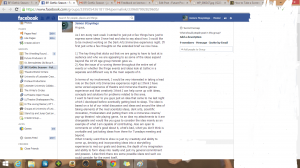
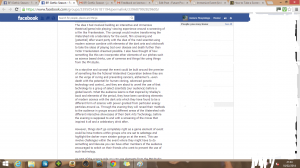
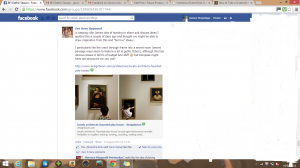
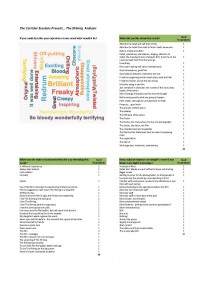
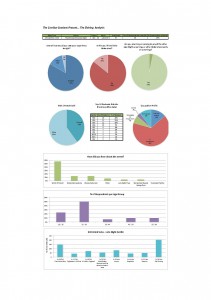
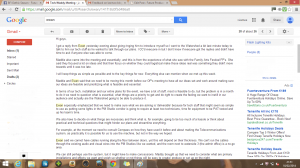
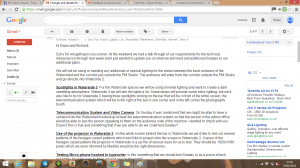
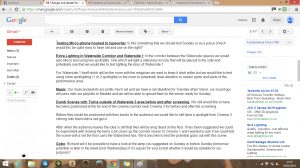
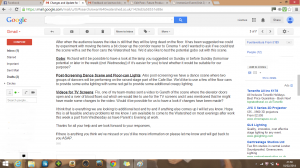
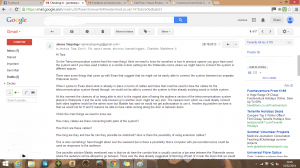
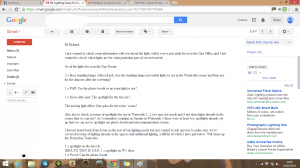
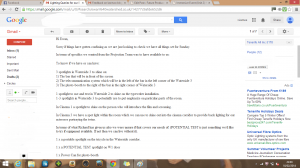
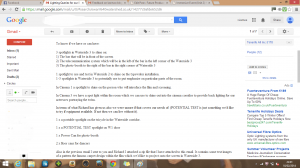
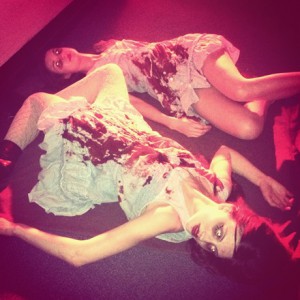
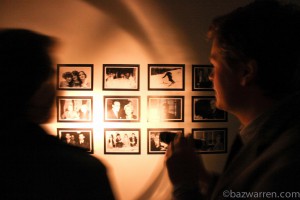
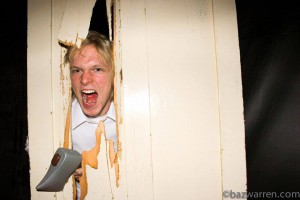
The technical requirements for The Shining Event were complex and James did a brilliant job of pulling together all of the aspects that were required and clearly communicating them to the Watershed Projection Department. He learnt a lot through the experience about being precise and clear about what was required and maintained good relationships with the whole team.
Ewan Dunford Watershed Technical Resources Manager